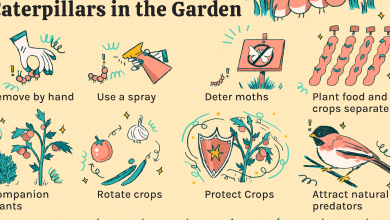Types and Varieties of Cacti
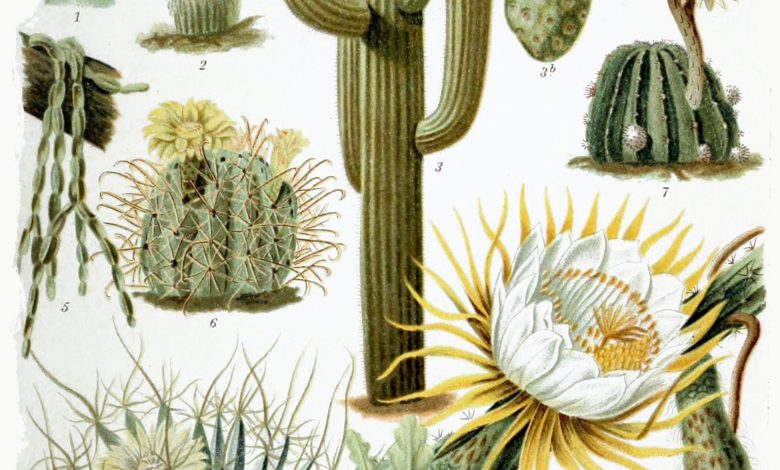
Did you know that there are thousands of types of cacti?
The cactus is one of the most used plants indoors and also in gardens. Evolutionarily, it has evolved to be able to survive really harsh conditions of water scarcity. So in general, they usually require little care.
In addition, there are varieties that can give us beautiful flowers. In this article we are going to see some of the most famous and used types of cacti.
Surely it can give you some idea about the variety that interests you for your home or garden.
types of cacti
It’s important to take note of some of the more generic names you may come across, likely including:
- Ladyfinger cacti.
- Old Lady’s Cactus.
- Rat tail cactus.
- Cholla cacti.
- Totem cacti.
- Feather cacti.
- Star cacti.
- Moon cacti.
There are other types, such as prickly pears, which refer to a family of cacti rather than an individual plant.
When choosing a cactus, you must first ask yourself the question: What do I want it for? Namely:
- You want your cactus of color and beauty to a garden or to your house.
- You want it to require little maintenance.
- You want it for the interior of your house.
- You need to plant it in a place with a lot of sun.
- You need it to better withstand the cold and low temperatures.
As we have said, there are many varieties of cacti and it is important to know what function you want this plant to have.
Astrophytum caput-medusae
This type of cactus is an ideal choice for indoors. It does not grow much, although it does need a little more water than other varieties of cacti that we will see in this article. It grows well in a pot.
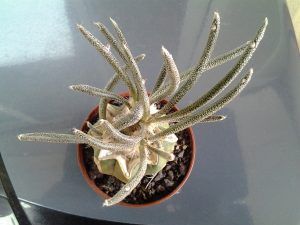 Common name: Astrophytum caput-medusae.
Common name: Astrophytum caput-medusae.- Scientific name: Astrophytum caput-medusae.
- Type: Cacti/Succulent.
- Water needs: Medium.
- Soil PH: 6.1-7.8.
- Flower color: Yellow.
- Special features: Potted.
- Hardiness zone(s): 9-10.
- Sun: Full sun, partial shade.
- Subtype: Indoor plant.
Thrown to theunisseniana
It grows quite a lot and is a type of cactus that can be planted both in full sun and in shade. Its flowers are pink. Does not require water.
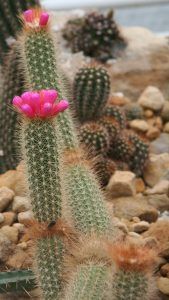 Common name: Arrojadoa theunisseniana.
Common name: Arrojadoa theunisseniana.- Scientific name: Arrojadoa theunisseniana.
- Type: Cacti/Succulent.
- Water needs: Few.
- Soil PH: 6.1-7.8.
- Flower color: Pink.
- Special features: Attracts birds.
- Hardiness zone(s): 10-11.
- Sun: Full sun, partial sun.
Arthrocereus rondonianus
This cactus is beautiful. When it blooms, we will have a plant that will give us very striking pink colors. It grows perfectly in a pot. It hardly needs any water.
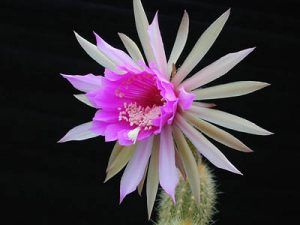 Common name: Arthrocereus rondonianus.
Common name: Arthrocereus rondonianus.- Scientific name: Arthrocereus rondonianus.
- Type: Cacti/Succulent.
- Water Needs: Dry.
- Soil PH: 6.1-7.8.
- Flower color: Pink.
- Special features: Potted.
- Hardiness zone(s): 10-11
- Sun: Full sun, partial sun.
Astrophytum coahuilense
Here we have an option that hardly requires care. It survives in the wilderness, so you may not have a problem if you keep it indoors.
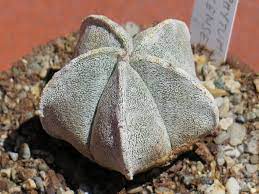 Common name: Astrophytum coahuilense.
Common name: Astrophytum coahuilense.- Scientific name: Astrophytum coahuilense.
- Type: Cacti/Succulent.
- Water Needs: Dry.
- Soil PH: 6.1-7.8.
- Flower color: Yellow.
- Special Characteristics: Showy flowers.
- Hardiness zone(s): 9-11.
- Sun: Full sun, partial shade.
- Subtype: Indoor plant.
Austrocylindropuntia exaltata
They attract insects and birds. Especially the butterflies. The red color of its flowers is very striking. It does not require much water and can also be kept indoors.
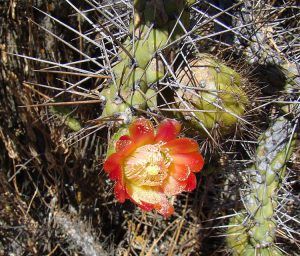 Common name: Austrocylindropuntia exaltata.
Common name: Austrocylindropuntia exaltata.- Scientific name: Austrocylindropuntia exaltata.
- Type: Cacti/Succulent.
- Water Needs: Dry.
- Soil PH: 6.1 to 7.8.
- Flower color: Red.
- Special Characteristics: In a pot, it attracts birds and butterflies.
- Hardiness zone(s): 9-10.
- Sun: Full sun
- Subtype: Indoor plant.
Aylostera narvaecensis
This variety gives us very striking flowers. It survives well in a pot. It can be an excellent option as an indoor plant. It hardly requires water.
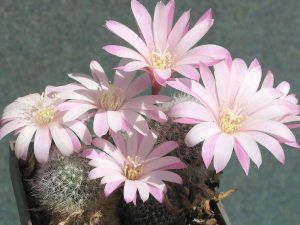 Common name: Aylostera narvaecensis.
Common name: Aylostera narvaecensis.- Scientific name: Aylostera narvaecensis.
- Type: Cacti/Succulent.
- Water Needs: Dry.
- Soil PH: 4-6.
- Flower color: Pink.
- Special Characteristics: Showy flowers,potted.
- Hardiness zone(s): 9-11.
- Sun: Full sun, partial shade.
- Subtype: Indoor plant.
Austrocylindropuntia shaferi
They can be both in full sun, and in an interior patio. They are characterized by being deciduous and the flowers are red.
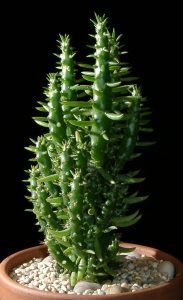 Common name: Austrocylindropuntia shaferi.
Common name: Austrocylindropuntia shaferi.- Scientific name: Austrocylindropuntia shaferi.
- Type: Cacti/Succulent.
- Water Needs: Dry.
- Soil PH: 6-8.
- Flower color: Red.
- Special features: Container.
- Hardiness zone(s): 9-10.
- Sun: Full sun, partial shade.
- Subtype: Deciduous.
Aylostera narvaecensis
An excellent option for interiors. Its flowers give us a variety of pink tones. They are very showy and live comfortably in pots. Does not require much water.
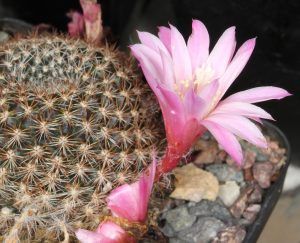 Common name: Aylostera narvaecensis.
Common name: Aylostera narvaecensis.- Scientific name: Aylostera narvaecensis.
- Type: Cacti/Succulent.
- Water Needs: Dry.
- Soil PH: 4-6.
- Flower color: Pink.
- Special Characteristics: Showy flowers, potted.
- Hardiness zone: 9-11.
- Sun: Full sun, partial shade.
- Subtype: Indoor plant.
ball cacti
It is a very famous variety. It is characterized by small yellow flowers. It takes very well long periods of drought.
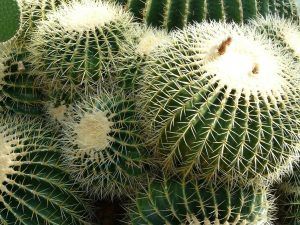 Common name: C actus ball.
Common name: C actus ball.- Scientific name: Parodia Magnifica.
- Type: Cacti/Succulent.
- Water Needs: Dry.
- Soil PH: 6.1 to 7.8.
- Flower color: Yellow.
- Special Characteristics: Potted, drought tolerant, easy to grow.
- Hardiness zone(s): 9 to 11.
- Sun: Full sun to partial shade.
beavertail cacti
The «beaver tail» cactus is characterized by offering us very beautiful pink colors. It tolerates very long periods without water and can be in both full sun and shade.
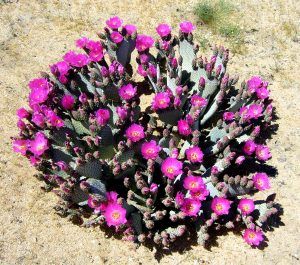 Common name: Beavertail cactus.
Common name: Beavertail cactus.- Scientific name: Opuntia Basilaris.
- Type: Cacti/Succulent.
- Water Needs: Dry.
- Soil PH: 6.1 to 7.8.
- Flower color: Pink.
- Special Characteristics: Tolerates drought, potted.
- Hardiness zone(s): 8 to 11.
- Sun: Full sun to partial shade.
Arthrocereus rondonianus
It blooms giving pink tones and it adapts well to both full sun and shade. Does not require much water.
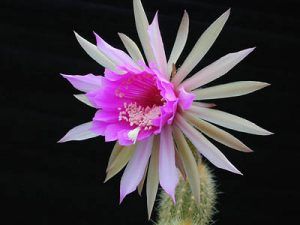 Common name: Arthrocereus rondonianus.
Common name: Arthrocereus rondonianus.- Scientific name: Arthrocereus rondonianus.
- Type: Cacti/Succulent.
- Water needs: Few.
- Soil PH: 6.1-7.8.
- Flower color: Pink.
- Special features: Potted.
- Hardiness zone(s): 10-11.
- Sun: Full sun, partial sun.
bishop’s cap
The “Bishop’s Cap” cactus is very interesting. The reasons are that it is easy to take care of, that is to say, it hardly wants water and also, with its yellow flowers it is showy and striking. A good option also for interiors.
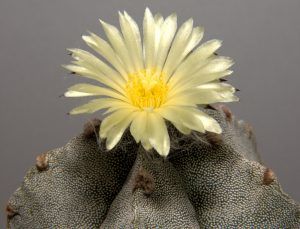 Common name: Bishop’s cap.
Common name: Bishop’s cap.- Scientific name: Astrophytum tulense.
- Type: Cacti/Succulent.
- Water Needs: Dry.
- Soil PH: 6.5-8.0.
- Flower color: Yellow.
- Special Characteristics: Potted, showy flowers.
- Hardiness zone(s): 9-10.
- Sun: Full sun, partial shade.
- Subtype: Indoor plant.
bunny ear cactus
The “rabbit ear” cactus has received this name due to its peculiar shape. It hardly requires water and can be in full sun as well as in the shade. It grows well in a pot, making it a good choice indoors as well.
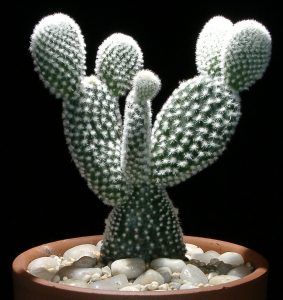 Common name: Rabbit ear cactus.
Common name: Rabbit ear cactus.- Scientific name: Opuntia Microdasys.
- Type: Cacti/Succulent.
- Water Needs: Dry.
- Soil PH: 6.1 to 7.8.
- Flower color: Yellow.
- Special Characteristics: Potted, Tolerates drought.
- Hardiness zone(s): 9 to 11.
- Sun: Full sun to partial shade.
Cactus Candlestick
The «chandelier» cactus can be made very large. Its water needs are high for a cactus. You should plant it in full sun. It is an option that if it grows, adorns any garden. However, it is not as simple as the other varieties discussed here.
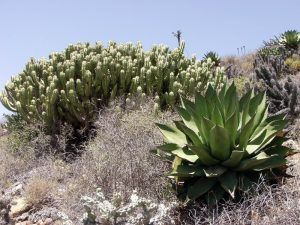 Common name: Candelabra Cactus.
Common name: Candelabra Cactus.- Scientific name: Myrtillocactus Cochal
- Type: Cactus/Succulent
- Water Needs: Medium.
- Soil PH: 6.1 to 7.8.
- Flower color: Pale green.
- Special Characteristics: Potted, drought tolerant.
- Hardiness zone(s): 9 to 11.
- Sun: Full sun.
Frequently asked questions about cacti
Are cacti succulents?
Since cacti are plants that store water, they are considered succulents. Water is stored in the fleshy part of cacti, something that is a defining characteristic of succulents in general. Therefore, cacti are considered a subcategory within the group of succulents.
However, this does not mean that all succulents are cacti. Cacti are specific types of succulents that contain areoles, also known as areas from which the spines grow. They are aspects of cacti that do not appear in other succulents, which makes them unique in this regard.
Can cacti be considered as trees?
No, but they have many aspects that mimic trees. Although there are some cacti that closely resemble certain types of trees, such as the Pereskia genus, cacti are not usually considered trees.
The characteristics that are often confused with the definition of a tree are its leaves, its bark and its ability to grow in the form of a tree. However, assuming that a cactus is a tree because it looks like one is wrong.
Cacti are still considered part of the Cactaceae and are not considered trees by scientists.
Are cacti ericaceous?
Cacti are not ericaceous because they are not considered part of the Ericaceae family. Instead, cacti are considered part of the Cactaceae family.
Are cacti plants?
Cacti are considered plants due to their status as succulents, a subcategory of plants.
Are cacti angiosperms?
Angiosperms is another way of referring to flowering plants, a category to which cacti belong. The Cactaceae family is included in the angiosperm category, which places cacti in this category as well.
Are cacti monocots?
No, they are not. This is because angiosperms are usually considered dicots, that is, flowering plants that have two seed leaves.
Are cacti vegetables?
Not all cacti are considered edible, so not all cacti can be considered vegetables. However, species that are edible are considered vegetables (for example, nopales, a type of edible cactus).
Can cacti die?
Although cacti are famous for being slow-growing and long-lasting plants, they may die under adverse circumstances or from clumsiness. The most common cause of cacti death is usually excess moisture in the soil, often the result of overwatering.
Since cacti don’t usually need as much water as other flowering plants, it’s easy to overestimate how much water they need. It is also possible for cacti to die from low temperatures, although some species are able to survive extremely low temperatures.
Are cacti flowers?
Most cacti are not considered to be flowers, but some species have been known to have flowers growing out of them. For example, some types of cacti like Echinopsis end up producing flowers that are quite beautiful, leading many to believe that cacti themselves are flowers.
However, since cacti only house flowers, they are still considered plants. There are also many cacti that do not have flowers, but only have spines, which makes this term general.
However, it must be taken into account that cacti are usually considered flowering plants, a concept in botany different from that of flower.

![Photo of What diseases and pests attack the cherry tree? [Identify and Treat]](https://www.complete-gardening.com/wp-content/uploads/2022/08/what-diseases-and-pests-attack-the-cherry-tree-identify-and-treat-390x220.jpg)

![Photo of Citronella Cuttings: [Concept, Period, Rooting and Planting]](https://www.complete-gardening.com/wp-content/uploads/2022/08/citronella-cuttings-concept-period-rooting-and-planting-390x220.jpg)
